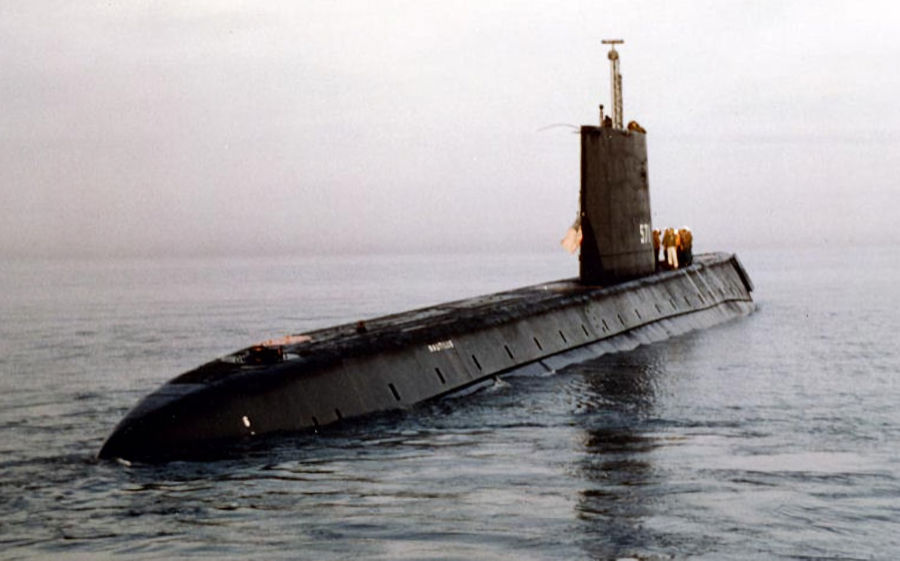
Podcast: Play in new window | Download
Submarines are one of the more recent military advancements, coming to prominence during the first World War and maintaining a presence in the majority of developed naval fleets ever since.
In essence, a submarine, as the name may suggest is a watercraft that allows the crew to submerge and sail under the water. During the era before radar detection, they were extremely useful for stealth missions and sailing in enemy waters and, with recent advancements, continue to be a useful tool for armed forces throughout the world. They also stand as a testament to the remarkable feats of engineering that humanity is capable of. They have also been used for a number of other purposes beyond purely military, especially in the field of scientific research.
Despite coming to prominence in the early 20th century, submersible vessels have been reported upon as early as the 16th century although the first credible account of an early submarine comes from 1620 when a Dutchman named Cornelius Drebbel created a navigable submarine whilst in the service of King James I of England. Some would say that the veracity of such claims is questionable, especially as the device needed to be propelled by oars. However, Drebbel’s vessel is amongst the first that can be considered submersible.
A number of patents for more advanced vessels were submitted and granted in the 18th century. Amongst the most notable is Nathaniel Symons use of a ballast tank and leather bags to allow a vessel to submerge and re-surface.
The first true military submarine was the Turtle, built in 1775 by an American named David Bushnell, but it was not until 1864, during the American Civil War, that a truly effective military submarine, capable of sinking an enemy vessel was built. Using an exploding torpedo a vessel name the H. L. Hunley sank the Union ship the USS Housatonic. The Hunley itself sank soon after, possibly as a result of its own torpedo.
Slowly but surely, an increased understanding of mechanics made submarines a much more viable proposition. A wide variety of designs came about during the 19th century and were used to various levels of effectiveness. However, it was not until the early 20th century that they began to be widely incorporated into navies throughout the world.
There were early successes in conflicts such as the Russo-Japanese War, but the submarine became more widely recognised as a supremely effective military tool during World War I. The Great War saw the debut of the German U-boat, one of which, the U-20, was credited with the sinking of the RMS Lusitania on 7 May 1915. Public opinion was turned against Germany following the sinking and it is one of the reasons why the United States was drawn into the conflict.
Despite only having 20 U-boats at the beginning of the World War I, superior design and tactical awareness allowed the Germans to sink more than 5,000 Allied ships during the course of the war, cementing the submarine’s status as a formidable wartime vessel.
Upon the advent of World War II Germany continued to use their submarines to devastating effect against the British Navy. During the Second Battle of the Atlantic, they were used to destroy as many merchant ships as possible to prevent the British from attaining much-needed supplies to continue the war effort. Though Germany eventually lost the battle, the U-boats deployed by the Germans played a large part in prolonging the conflict.
The vessels were also extremely important to the Japanese, American and British navies, though perhaps not used as effectively as the U-boat was by Germany.
Following the end of World War II, continued improvements to submarine technology were made. This included the launch of the first cruise missile in July 1953. Launched from the deck of the submarine USS Tunny, the SSM N-8 Regulus, or Regulus 1 missile, vastly improved combat capacity.
Furthermore, nuclear power was slowly introduced into the equation and began to take over from the diesel-electric propulsion systems that submarines of the age had been previously utilising. Launched on 21 January 1954, the USS Nautilus, was the first of this new generation of nuclear-powered submarines. The vessel went on to have a famous career, becoming the first to complete a submerged transit to the North Pole while breaking many records in the process. It was decommissioned in 1980 but the advancements made through the Nautilus informed the development of later submarines and cemented nuclear power as their dominant power source.
Submarines continue to make up an important part of many navies throughout the world and as well as for combat, they have proved extremely useful for exploration purposes as well. There has also been an increase in the use of the technology for civilian purposes including for tourism, and underwater surveys along with numerous other benefits to both the scientific and business communities.
Podcast: Play in new window | Download





